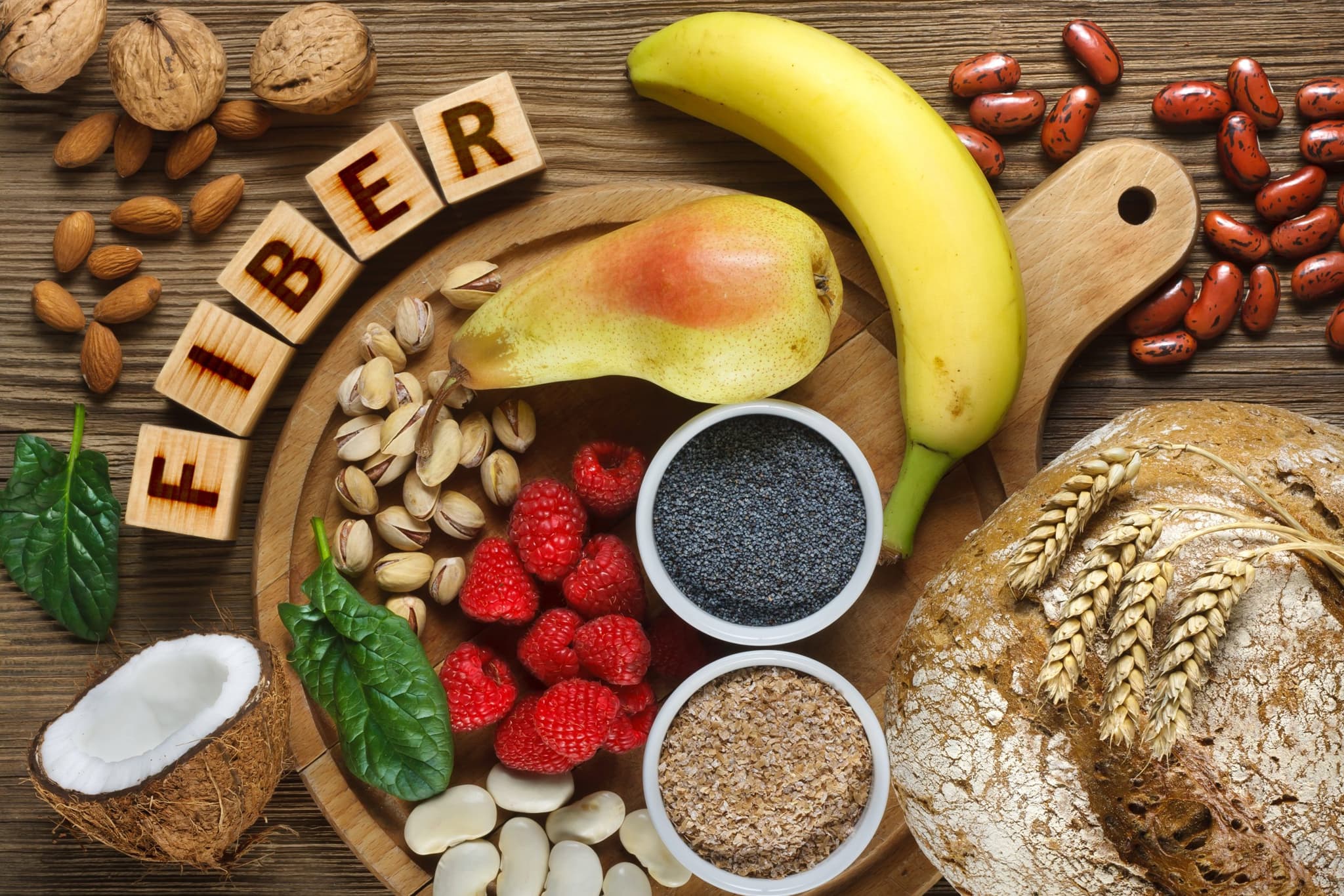
2025-11-21T14:10:25
How to Prevent Gestational Diabetes
- Family Medicine
- Internal Medicine
- OB/GYN
August 12, 2025 | Family Medicine • Gastroenterology • Internal Medicine • Weight Management
Specialties:Family Medicine • Gastroenterology • Internal Medicine

Dietary fiber is a crucial part of a healthy diet, yet many people don’t get enough of it. Fiber is found mainly in foods like fruits, vegetables, whole grains, and legumes. It’s best known for preventing constipation, but fiber-rich foods can also help you maintain a healthy weight as well as lower your risk of diabetes, heart disease, and even some cancers. Despite these benefits, about 90% of Americans aren’t meeting daily fiber recommendations.
Benefits of a High-Fiber Diet
With all these benefits, adding more fiber to your meals is a simple way to improve your health – next, we’ll explore how you can do just that.
Dietary fiber comes in two main types: soluble and insoluble. Both are important for health, but they function differently in the body:
Most high-fiber plant foods contain a mix of both soluble and insoluble fiber, so eating a variety of plant-based foods will ensure you get the benefits of each. For optimal health, include plenty of different fruits, veggies, whole grains, and legumes in your diet.
Adults should aim for a high fiber intake each day. General recommendations suggest about 25 grams of fiber per day for women (21 grams if over age 50) and 30–38 grams per day for men (30 grams if over 50). Another way to think of it is to get about 14 grams of fiber for every 1,000 calories you eat, as advised by the Dietary Guidelines for Americans. (For example, on a 2,000-calorie diet, that’s roughly 28 grams of fiber a day.)
In reality, most people fall far short of these goals; nearly 9 in 10 Americans do not get enough daily fiber. If your current fiber intake is low, increase it gradually. Adding too much fiber too quickly can cause gas, bloating, or cramping. Increase your fiber by a few grams at a time over several weeks to allow your digestive system to adjust. Also, be sure to drink plenty of water – fiber works best when it absorbs water, which helps keep your stool soft and easy to pass. By ramping up slowly and staying hydrated, you can boost your fiber intake comfortably and safely.
All dietary fiber comes from plants. Focusing on whole, unprocessed plant foods will naturally boost your fiber intake (refined grains or peeled produce have much less fiber). Here are some top sources of fiber to include in your diet:
When increasing your fiber, remember to opt for whole foods. Processing can strip away fiber. For example, removing the bran from grains to make white flour or peeling the skin off fruits/vegetables will lower their fiber content. To get the most benefit, choose whole-grain breads and cereals, eat fruit with the skin when you can, and enjoy vegetables in their whole form rather than as juices.
If you struggle to get enough fiber from food alone, fiber supplements (such as psyllium husk powders, capsules, or chewable tablets) can help. Taking a fiber supplement daily is generally safe, and it can be an easy way to support your body if your diet is lacking. In fact, supplements containing fiber (like psyllium, inulin, or methylcellulose) can help relieve constipation, lower cholesterol, and help you feel full, much like the fiber in foods.
However, nutrition experts agree it’s best to get fiber from foods whenever possible. In addition to fiber, whole foods provide a variety of vitamins, minerals, and other nutrients that supplements don’t offer. Use supplements as an addition toa healthy diet, not as a replacement.
If you do use fiber supplements, do so carefully. Start with a low dose and increase slowly to minimize gas and bloating, which are common side effects at first. Also, always take fiber supplements with plenty of water. It’s wise to check with your healthcare provider before starting a supplement, especially if you have any digestive health conditions or take other medications. Fiber supplements can affect how some medicines work (for example, they may lower blood sugar, which is important for people with diabetes to consider). Individuals with a history of intestinal blockage or conditions like Crohn’s disease or IBS should consult their doctor or gastroenterologist before using supplements. The providers at Revere Health can help determine if a fiber supplement is appropriate for your specific situation and guide you on proper usage.
Fiber might not be the most glamorous nutrient, but it’s important for good health. From keeping your digestion regular to protecting your heart, a high-fiber diet offers a wide range of health benefits. Both soluble and insoluble fibers play important roles in the body, supporting everything from digestive function to blood sugar control, and cancer prevention. The good news is that small changes, like choosing whole grains, eating an extra serving of fruits and veggies, or adding beans to your meals can significantly boost your fiber intake.
Most people have room to improve their fiber consumption. If you’re not sure whether you’re getting enough fiber or you need guidance on dietary changes, talk with your healthcare provider. At Revere Health, our multi-specialty team (including Family Medicine and Gastroenterology specialists) is here to help you develop a nutrition plan that fits your needs. By prioritizing fiber-rich foods, you can take an important step toward better digestive health, disease prevention, and overall wellness.

WRITTEN BY:
Shayliah Lassen
Shayliah is currently an intern at Revere Health focusing on Digital Marketing. With a Bachelor's of Science in Business Administration and Marketing from Western Governors University, she brings a solid foundation in digital marketing to her role as a Marketing Intern. Outside of work, Shayliah enjoys baking, playing pickleball, hitting the gym, and listening to new music. These interests reflect her vibrant and dynamic approach to both her personal and professional life.

2025-11-21T14:10:25

2025-11-03T11:32:24

2025-10-21T11:51:52

2025-08-20T16:07:59
This information is not intended to replace the advice of a medical professional. You should always consult your doctor before making decisions about your health.